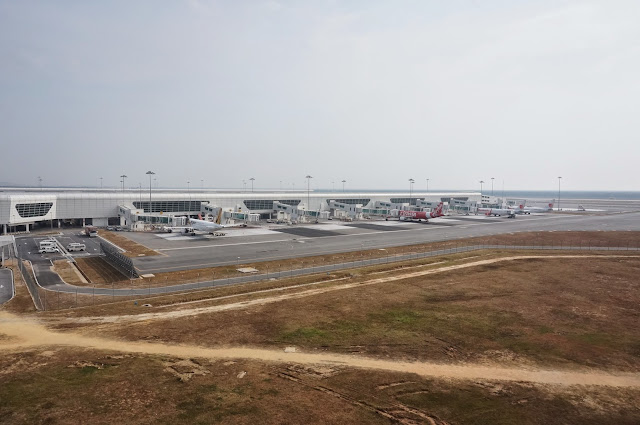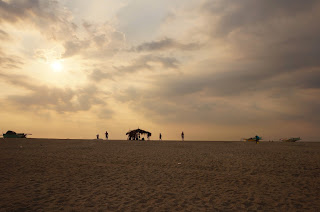Singapore - Malacca - Kuala Lumpur
I figured I'd split this post into at least three parts not only to keep each post short but also to segment it according to each event. This part narrates my arrival in Singapore and transit to Malaysia.
13 February - 13 March 2015
Day 1: Manila - Singapore
I arrived in Singapore in the morning and immediately proceeded to check in and drop my bags at my hostel in Clarke Quay. My original plan for the day was to go cafe-hopping in the newly-minted hipster neighborhood of Jalan Besar but ended up going only to Chye Seng Huat Hardware. Nevertheless, I did a walking tour around the Jalan Besar and Little India area and along Orchard road, encountering both traditional and modern shops. |
| Shophouses are called as such because it consists of a commercial shop on the 1st storey and a residential house on the 2nd storey, usually of the same owner. |
Day 2: Valentine Wedding
After getting breakfast at the cafe next-door, I hurriedly prepared for my colleague's wedding lunch. It was my first time attending a Chinese wedding ceremony so I was a bit conscious but excited. It was also the first time I'm seeing my colleagues after my resignation. We stayed through the whole wedding and although the bride was busy being stunningly pretty and entertaining her guests, we did manage to exchange a few hugs and words.
 |
| Because it was February 14, they give out these balloons in Esplanade Theater. I brought this one home and still keep it alive. |
Day 3: Pulau Ubin
We got up early the next morning to catch the 8:30 am bus to Changi Village. After a quick breakfast at one of the hawkers, we got on a jetty to Pulau Ubin, the last remaining village (kampong) in Singapore which still embodies pre-modern Singapore. We rented a mountain bike from a resort run by Filipino staff and followed one of many biking trails. Just before sunset, we were back in the mainland and were on a tandem bike heading towards Changi seaside park. We quietly watched the sunset slowly disappear into the horizon before returning our bike and catching a bus back to Clarke Quay.
 |
| The biking trails generally go around a big water reservoir offering multiple viewpoints and varying levels of trail difficulty. |
Day 4: Singapore - Malacca
We woke up the next morning just in time to beat the morning rush at Song Fa Bak Kut Teh. The line normally builds up around 11am and we arrived at around 10:30am. At noon time, we were on our way to Malaysia -- taking a Causeway Link bus to Woodsland/Johor Bahru from Queen Street Bus Station, passing through immigration, and changing to another bus to Melaka at the Larkin Bus Terminal. (Tip: it's a lot cheaper to change buses at the border than to book a single bus for the whole Singapore-Malaysia crossing.) At past 6pm, we were in Malacca and was exploring what's left of the night market by 8pm.Day 5: Melaka - KL
Waking up late, we opted to rent a motorbike from our hostel, Discovery Guesthouse, which agreed at 20RM for 2 hours. After gaining our bearings, we drove around the city-centre, stopping by at Restoran Formosa for a quick chicken rice ball brunch and at St. Paul' Church for an overlooking view of the city before heading to Pulau Melaka to see the Masjid Selat Melaka, a mosque built on the Malacca Straits. Upon returning the bike, I suggested to walk around Jonker Street one last time to see what it looks like in day time at which we fortunately stumbled upon a top store whose world-champion owner showed us some tricks. By early afternoon, we were back on the bus and on the way to Kuala Lumpur, arriving at TBS instead of KL Sentral. (Tip: TBS is a new bus terminal at which some south-route buses now dock instead of at Puduraya or KL Sentral. Check with the bus driver beforehand to avoid confusion).
 |
| Dubbed in the internet as "Top Man", he laments how the current generation no longer knows how to play tops and may not even know what tops are |
Day 6: Farewell/Hello
It was a day of goodbyes and hellos. After seeing my friend off at KLIA2 for his return flight to Manila, I proceeded to meet up with another friend in KL City Centre. I was to bunk at her condo unit she was sharing with her officemates the whole time I was in KL to save on accommodation and to possibly make new friends.
 |
| Just one hour away from the city centre via a broad hi-way, KLIA2 looks massive inside and out. |
Part 3: That time I was abroad for a month (3/3)










.png)
.png)
.png)
.png)
.png)
.png)
.png)
.png)
.png)
.png)
.png)
.png)
.png)
.png)
.png)
.png)
.png)
.png)
.png)
.png)
.png)
.png)
.png)